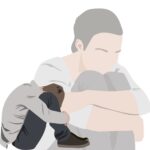Excoriation disorder, often known as skin picking disorder, is a mental health problem defined by the recurrent act of picking one’s skin, resulting in tissue damage and causing functional impairment and/or discomfort. This pathological, obsessive, and repeated picking of skin that causes tissue damage is also referred to as neurotic excoriation, dermatillomania, or psychogenic excoriation. Anxietiestic picking has been recognized as a health issue in medical literature for quite some time. The term “neurotic excoriation” was initially used by Erasmus Wilson in 1875 to characterize the exceedingly difficult-to-control picking activities seen in neurotic patients.
In order to determine the prevalence of skin-picking disorder, a survey was administered to 10,169 persons (ranging in age from 18 to 69) who were chosen at random from the US population. 213 people (2.1%), or 55.4% of the total, reported having a skin-picking problem at the present moment, while 318 people (3.1%), or 54.1% of the total, reported having a skin-picking condition at some point in their lives. Compared to those who never picked at their skin, those with a present skin-picking condition were more likely to be female. Most often endorsed were mental health comorbidities, with 63.4% having generalized Anxiety disorder, 53.1% having depression, and 27.7% having panic disorder. Findings from this study point to the prevalence of skin-picking disorder and the high comorbidity rates that are characteristic of this illness in the general population.
The clinical evaluation of individuals with skin-picking problems involves a comprehensive mental and physical assessment, promoting a multidisciplinary strategy for diagnosis and therapy. Medication (such as naltrexone, serotonin reuptake inhibitors, or N-acetylcysteine) and cognitive-behavioral therapy (such as habit reversal or acceptance-enhanced behavior therapy) should be part of any treatment plan.
According to sources, treatment of dermatillomania requires a multi-pronged strategy that addresses the underlying mental disease, alleviates itching, and addresses the lesions on the skin. When it comes to treating dermatillomania’s mental component, selective serotonin reuptake inhibitors (SSRIs) have been quite helpful. Patients with dermatillomania have also found success with very little side effects from non-pharmacological therapies including behavioral therapy, habit reversal exercises, and support groups.
It is important to look for the signs and symptoms of the disorder to be able to diagnose the problem and seek the required treatment on time. The DSM 5 TR criteria and diagnostic features for skin picking disorder are given below:
Diagnostic Criteria
A. Skin lesions caused by repetitive skin plucking.
B. Multiple attempts to try to reduce or eliminate skin picking.
C. The skin picking leads to major trouble in social, occupational, or other crucial areas of functioning, or produces clinically substantial distress.
D. The skin picking is not caused by a medical ailment (like scabies) or the physiological effects of a drug (like cocaine).
E. No other mental disorder characterized by symptoms similar to skin picking (such as psychotic delusions or tactile hallucinations, body dysmorphic disorder, stereotypic movement disorder, non-suicidal self-injury, or attempts to improve one’s perceived appearance) is a more appropriate explanation.
Diagnostic Features
- As per Criterion A, the defining characteristic of excoriation (skin-picking) disorder is the increased frequency with which the affected individual picks at their skin.
- Although many people choose from a variety of body parts, the most popular ones are the face, arms, and hands.
- People can pick at perfectly normal skin, at little skin imperfections, at lesions like calluses or pimples, or even at scabs that have formed as a result of picking at other areas.
- While most people use their fingernails, tweezers, pins, and other instruments are also used.
- Behaviors such as biting, squeezing, lancing, and skin plucking are also possible.
- People who suffer from excoriation disorder frequently pick at their skin for long periods of time, sometimes even hours at a time, and this picking habit can last for months or even years.
- Despite the fact that people with this illness frequently try to hide or mask their skin lesions (e.g., with makeup or clothes), criterion A states that skin picking must result in skin lesions.
- Criteria B indicates that the individual with excoriation disease has made many attempts to reduce or cease skin picking.
- If skin picking is clinically substantial and impairs social, occupational, or other critical areas of functioning, then it meets criterion C.
- Distress encompasses a range of negative emotions that people with skin picking may experience, including a sense of helplessness, humiliation, and shame.
- When people avoid social interactions, it can have a negative impact on their ability to perform in several aspects of life, including social, occupational, academic, and leisure activities.
I am a passionate and knowledgeable psychologist, with a Master of Philosophy (MPhil) in Psychology specializing in Counseling Psychology. Through my writing, I share my insights and thoughts on various psychiatric disorders, conduct analysis on films that touch on psychological issues, and explore other topics related to psychology, while also providing valuable information to psychology enthusiasts, students as well the general community.





